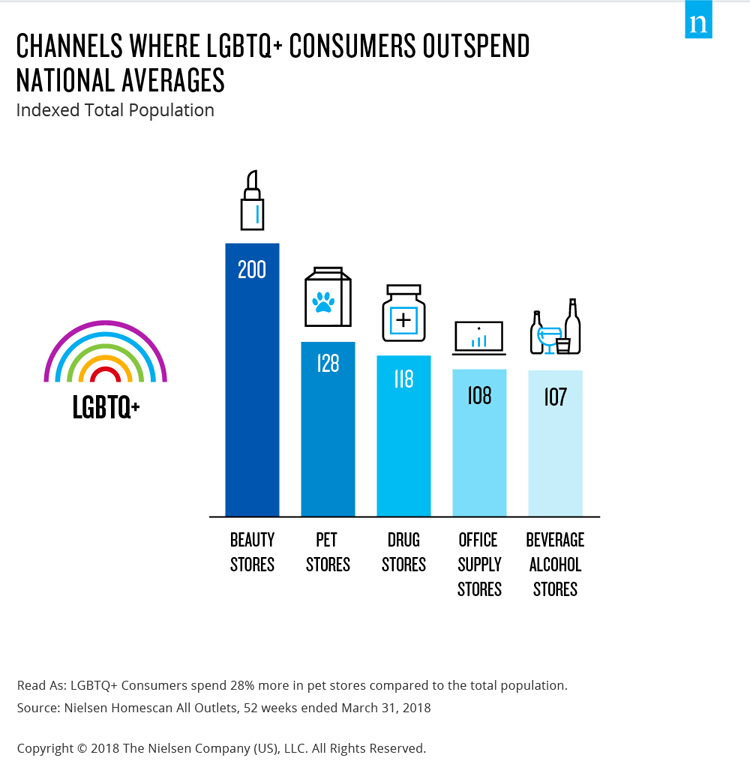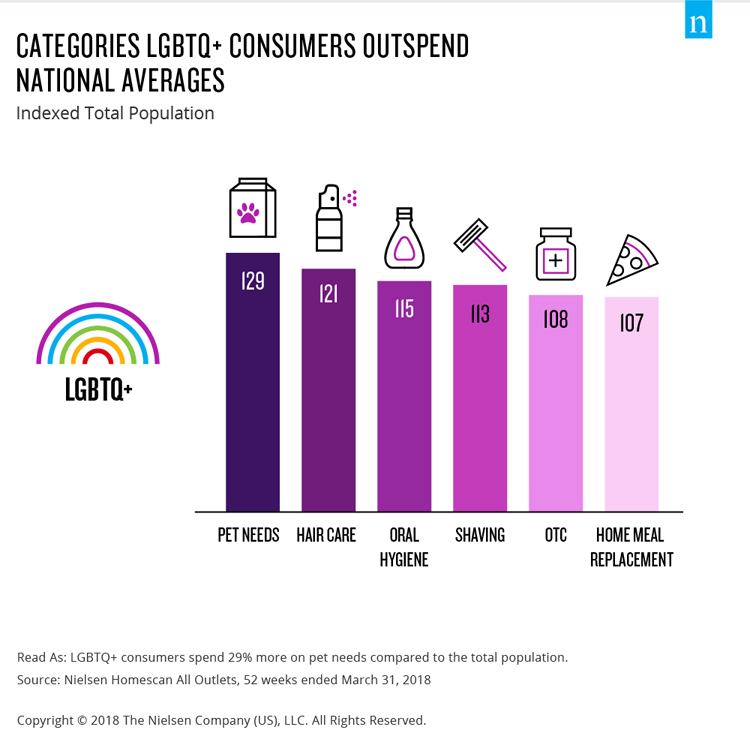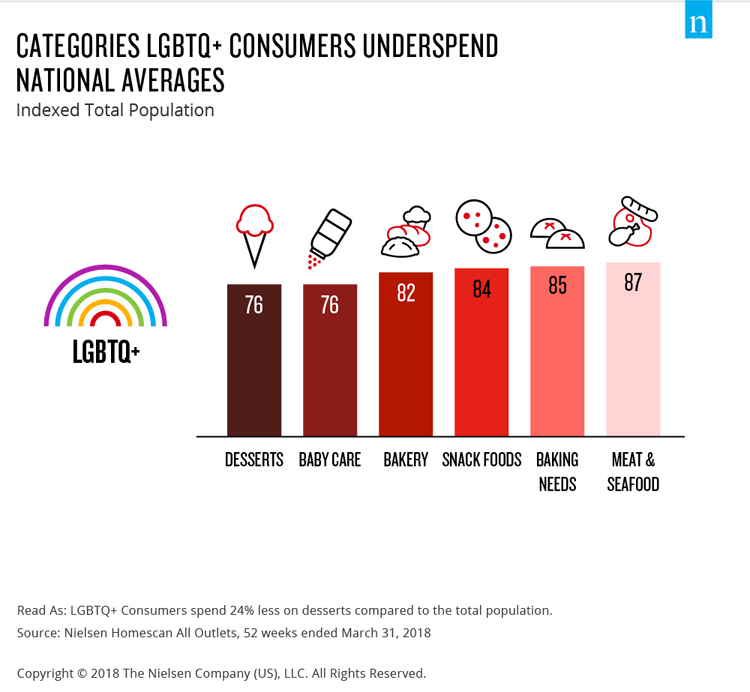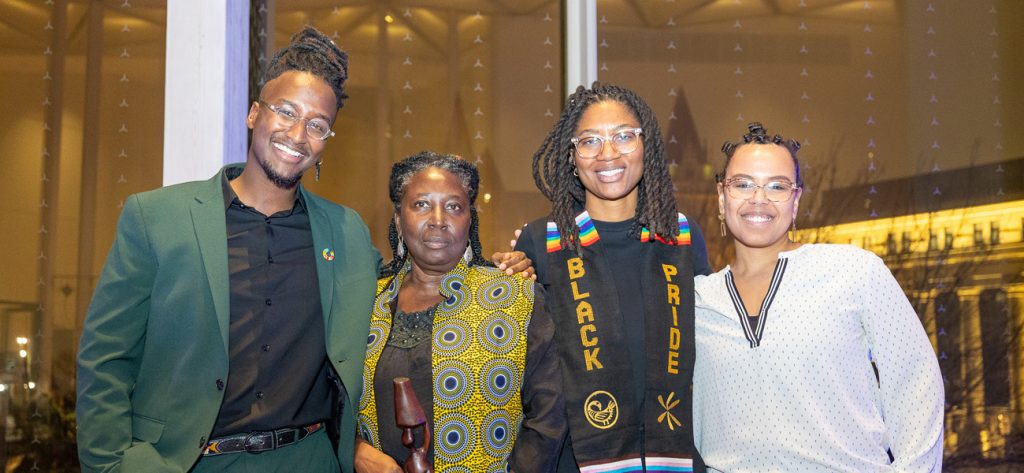Insights from Nielsen’s Represented. Understood. Heard. The Canadian LGBTQ+ Consumer Study…
Hey big spender. It should come as no surprise that Canada’s LGBTQ consumers are big shoppers wielding even bigger spending power. But they’re not the only ones dishing out the dough. With companies both large and small spending a lot of money courting the pink dollar, there’s growing interest in where LGBTQ consumers are shopping and what they’re buying.
A June 2018 Nielsen report, titled Represented. Understood. Heard. The Canadian LGBTQ+ Consumer Study, found that LGBTQ consumers spend $3.7 billion in fast-moving consumer goods (FMCG) annually, representing 4.4% of Canada’s total FMCG purchases. The report also found that more than 40% of Canadian LGBTQ consumers live in big cities and that location influences consumer spending habits.
So where are they shopping and what are they buying?

When it comes to the fast-moving consumer goods category, grocery stores come out on top with LGBTQ consumers spending more than half (53%) of their dollars there. While their spending in the category is on par with the average Canadian household, LGBTQ consumers outspend at select specialty channels: twice as much as the general population in beauty stores, 28% more at pet stores and 18% more in drug stores.

Dig a little deeper, and we find that LGBTQ consumers spend more than the average Canadian on certain products and that the increased spending is tied to where they’re shopping. LGBTQ consumers spend 29% more on pet care, 21% more on hair care, 15% more on oral hygiene and 13% more on shaving products. It’s clear that for LGBTQ consumers, personal care matters.

There are certain aisles of the store where Canadian LGBTQ consumers aren’t spending nearly as much when compared to the national average. They spend 24% less on desserts and baby care, 18% less on bakery products, 16% less on snack foods, 15% less on baking needs and 13% less on meat and seafood. However, the Nielsen study notes that LGBTQ families with small children are on the rise (currently 7% vs. 11% for the total population) and increased purchases of baby care products are sure to follow.
So who’s ready to go shopping?
JUMOL ROYES is a Toronto-based writer/PR & communications strategist with a keen interest in personal development and transformation. Follow him on Twitter @Jumol.






POST A COMMENT